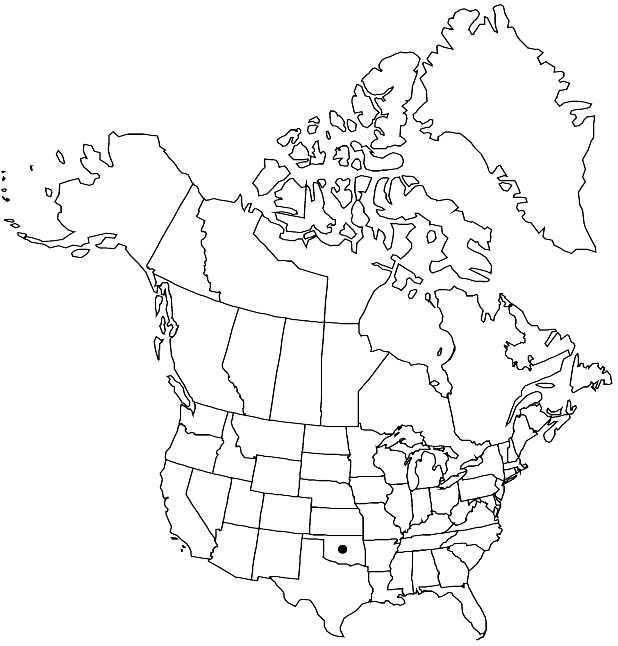Leavenworthia aurea
Ann. Lyceum Nat. Hist. New York 4: 88, plate 5. 1837.
Stems (when present) 1–3 dm. Basal leaves: petiole 1.8–3.9 cm; blade 3.5–6.5(–8) cm, lobes 1–3 on each side, margins shallowly dentate, terminal lobe suborbicular, 6–12 × 5–11 mm (equal to or slightly longer than wide), considerably larger than lateral lobes, margins usually shallowly dentate, sometimes slightly lobed. Fruiting pedicels: solitary flowers 30–90 mm; racemes 30–60 mm. Flowers: sepals widely spreading, oblong-linear, 2.9–4.6 × 1–1.9 mm; petals spreading, pale yellow, obcordate to broadly obovate, (5–)6–9 × 1.5–4.5 mm, claw bright yellow, 1.6–2.8 mm, apex shallowly emarginate, apical notch 0.1–0.4(–0.6) mm deep; filaments: median 3–4.5 mm, lateral 1.3–2.4 mm; anthers 0.6–1.1 mm. Fruits oblong, 2–3.1 cm × 3–5 mm, smooth, latiseptate, (margined); valves thin; ovules 6–14 per ovary; style (1.5–)2–3 mm. Seeds 2–4.2 mm diam.; wing 0.2–0.3 mm wide; embryo straight. 2n = 48.
Phenology: Flowering Mar–Apr.
Habitat: Pastures, roadsides, shallow limestone soils, seeps, creek margins
Elevation: 100-200 m
Discussion
Of conservation concern.
Leavenworthia aurea is known only from Choctaw and McCurtain counties.
Selected References
None.
